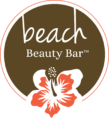What do KP and KFC have in common?
KP, Keratosis Pilaris, is a common skin condition often referred to as “chicken skin,” hence the reference to KFC, Kentucky Fried Chicken.
What is Keratosis Pilaris?
Keratosis Pilaris appears like small, goose bumps, with varying degrees of inflammation and redness. It occurs when the body overproduces keratin and forms hard plugs on the skin’s surface. Like acne, keratosis pilaris is an inherited disorder of the hair follicles. It is not contagious.
You can usually find KP on the the outer sides of the upper arms, thighs, face, back and buttocks. It also can occur on the hands, and tops of legs, sides, or any body part except areas with hairless skin (like the palms or soles of feet).
While we don’t see if often, small bumps of KP can appear on the face and may be mistaken for acne.
KP most commonly affects teenagers and disappears by age 30, but many people struggle with this annoying, but harmless skin condition well into adulthood.
Nutrition and Keratosis Pilaris
When we break out in pimples or bumps of hardened dead skin, it is a cry for help from our body. These physical reactions are red flags that something is off internally.
While keratosis pilaris and acne are not the same thing. They are both the result of inflammation in the body.
As with acne, people suffering from KP should avoid inflammatory producing foods like dairy, soy, peanuts, vegetable oils (omega 6 fatty acids) and trans fats, sugar and refined or processed carbohydrates and grains.
Increase intake of green leafy vegetables and Omega 3 fatty acids. We love Omega Via for a pharmaceutical grade Omega 3 fish oil.
Also consider eating probiotic rich foods like sauerkraut or kimchee, or some probiotic supplements, because these healthy bacteria assist in nutrient production and absorption, among other benefits to the gut.
How to Treat Keratosis Pilaris
Lotions and creams containing lactic acid can effectively manage keratosis pilaris symptoms by exfoliating away rough bumps from keratin overgrowth. We also love adding in a physical scrub to take down any raised dead skin cells.
We recommend a two-step approach to managing KP on the body. This can be done daily or twice daily.
Use Buffing Beads, a non-pore clogging gentle scrub to cleanse the affected areas.
Apply an exfoliating serum or lotion containing lactic acid to clean, dry skin.
For mild cases, we recommend AmLactin™ which contains 12% lactic acid and can be purchased at the drug store or Costco. Clarify Serum 15 is a potent but gentle powerhouse of mandelic and lactic acids which can be used to combat moderate to severe cases of KP.
Do not use the above suggested routine for KP on the face. Schedule a facial consultation to effectively treat KP on the face.
A Final Note About KP
Keratosis pilaris is not acne, but it is bothersome and can sometimes be difficult to treat. It’s an outward sign that something is off balance internally. Avoid inflammatory foods, increase green leafy vegetables and Omega 3 fish oil.
Take a two-step approach to treating KP by using a gentle scrub to take down the hardened dead skin cells followed by an exfoliating serum containing lactic acid.
And, as always, if you are concerned about KP on the face, schedule a consultation so we can provide a customized treatment plan.
Cheers to clear!
Rene, Sammy and Stitch



